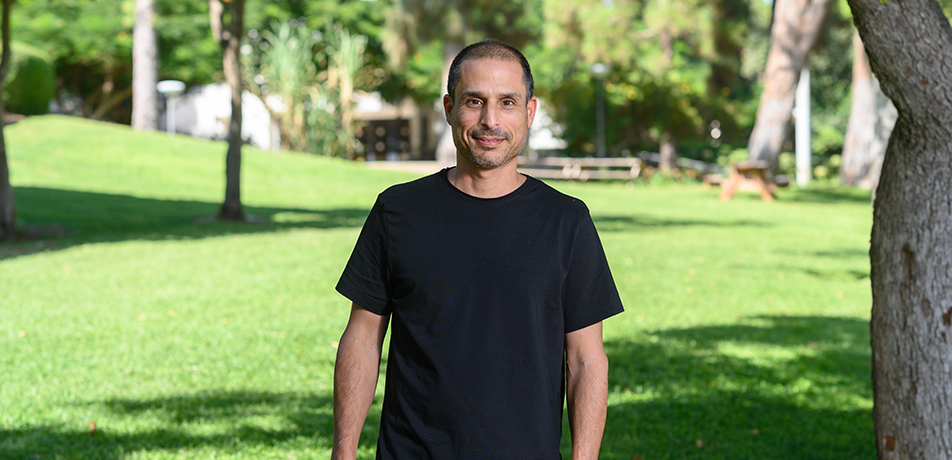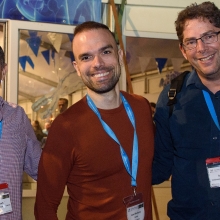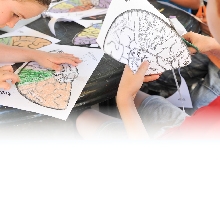Putting gene expression in its place
Prof. Nir Yosef is combining single-cell genomic sequencing with a powerful partner: artificial intelligence
New scientists

Prof. Nir Yosef
Just a few years ago, the introduction of genomic sequencing catapulted life science research forward, by making it possible, for the first time, to derive comprehensive information about the expression of genes, as well as the presence of other functional molecules, in complex tissues. But there was a built-in limitation: designed to analyze “smoothies”—made by blending many thousands of cells together—this approach could only reveal a statistical average of a sample’s bulk properties. Prof. Nir Yosef, a recent recruit to the Department of Systems Immunology, takes science a necessary step forward, by advancing methods to identify and profile gene expression and other properties of individual cells.
“To understand what’s happening in complex tissues, we need to understand where individual cells and cell types are located, and also need to know what’s happening within each and every cell,” says Prof. Yosef, who joined the Weizmann Institute at the start of 2022 after working as an Associate Professor at the University of California, Berkeley. “Taken together, this is a massive amount of data that, when analyzed, makes it possible to better understand how cells operate and communicate with each other. It can also help us model and even predict the tissue-wide dynamics that contribute to the onset of diseases like cancer.”
Prof. Yosef is an expert in single-cell genomics, a nextgeneration sequencing technology that makes it possible to characterize many thousands of cells at a time, by revealing the active genes of each cell. His recent research focuses on the development of computational tools that help make sense of the massive sets of singlecell data produced by relatively new technologies that reveal not only individual cells’ molecular profiles, but their location within tissues as well.
As Prof. Yosef explains, this new approach—called spatial transcriptomics and crowned “Method of the Year” by Nature Methods in 2020—is generating excitement throughout the research community, because of its potential to revolutionize our understanding of cellular communication on a tissuewide level, while clarifying the role that intracellular dynamics play in human development, health, and disease.
Tapping into AI: “About five years ago, scientists launched the Human Cell Atlas—an international consortium that is an outgrowth of the Human Genome Project,” he says. “The HCA is using single-cell genomics to create reference maps that catalogue the function and characteristics of every cell type in the human body.” He adds that many of the approaches used as part of this effort do not reference information about the locations of these cells within their respective tissues. And for Prof. Yosef, this is a limitation that can and should be overcome.
“The Atlas’ first draft, called Tabula Sapiens, used single-cell techniques to analyze 24 tissues and 400 different cell types,” he says. “But the data is hard to work with; tissue samples come from organ donors who have individual patterns of gene expression, something that may lead to biases that do not reflect gene expression in the general population. We are also hampered by the fact that, because this is a new field, the technologies used to analyze these samples have limited sensitivity. To reach the next level—and achieve a deep and detailed understanding of how different cell populations work together in living organisms—we need to find ways to overcome these hurdles and go beyond taking a cellular ‘census.’ That’s what spatial transcriptomics offers: a means to map out models that include cell location, and which can be used to better investigate and predict disease.”
To get closer to this goal, Prof. Yosef combines standard single-cell genomic sequencing with a powerful partner: artificial intelligence.
“We create algorithms, inspired by the neural networks in the human brain, to identify and remove the noise—the distorting variations or artifacts that muddy the data,” he explains. “With this approach, we are able to clean up the genomic data, and get a closer look at the gene expression and other molecular patterns that allow cells to communicate with their neighbors. It also allows us to construct ‘evolutionary trees’ that track the progression of complex multi-cellular dynamics, such as the evolution of cancerous tumors.”
Prof. Yosef is also the inventor of software that makes it possible to analyze and interpret single-cell genomic data, identify cellular function, and predict ways in which the gene expression balance is likely to be disturbed.
“It’s a challenge to make scalable tools that can model all this complex data, and use it to forecast the molecular events that might eventually happen downstream,” he says. “However, when applied to critical cell populations, particularly the cells of the immune system, these methods have great clinical significance; they can be used to test hypotheses related to disease onset and progression.”
New partnerships: Growing up in a town just a short drive away from the Weizmann Institute, Prof. Yosef is excited to be back in Israel with his wife and three children after spending over a decade in the United States. Now settled into his new lab, he continues to collaborate with his colleagues from UC Berkeley and elsewhere, while overseeing a growing team and appreciating what the Weizmann Institute has to offer.
“Among other things, I am part of an initiative in which Weizmann investigators working in particularly dataheavy fields—and my lab certainly qualifies!—are collaborating with leading innovators from Intel’s R&D facility in Israel,” he says. “We’re joining forces to find new ways in which AI and data science might help unlock the potential of high-resolution experimental data. In terms of basic science, and in terms of the insights this can generate for clinical medicine, it’s a great partnership.”
Education and select awards:
• BSc, Ben-Gurion University of the Negev (2002)
• MSc (2005) and PhD (2009), Tel Aviv University
• Postdoc, Broad Institute and Harvard Medical School (2010-2014)
• Sloan Research Fellowship (2016); Okawa Foundation Research Grant (2016); Chan Zuckerberg Biohub Investigator Program (2017)
Appointments:
• Assistant Professor (2014-2019), Associate Professor (2019-2022), University of California, Berkeley, Department of Electrical Engineering and Computer Sciences








